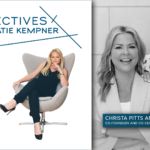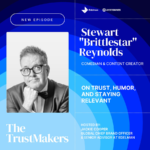By Nataly Kelly, CMO, Zappi
Women control or influence up to 85% of all consumer purchases in the United States. From groceries and personal care to healthcare, travel, and tech, women are not just participating in the economy—they’re steering it.
And yet, the advertising industry hasn’t fully caught up.
Zappi’s 2025 State of Creative Effectiveness report—analyzinging more than 4,000 ads and feedback from 1.6 million consumers—found that men find today’s advertising to be more relevant (3.7/5 versus 3.5) and distinctive (3.8/5 versus 3.7) than women. And this isn’t because women are harder to reach. In fact, they show higher unaided brand recall than men (70% vs. 66%, meaning they remember ads even more and can pick out the brand from a reel of competitors.
A Massive Market—and a missed opportunity
If women are earning more, spending more, and remembering more—why aren’t brands speaking to them more effectively?
Zappi’s findings don’t indicate that men are inherently more responsive to advertising, but there’s a valid argument that while society has evolved, advertising is lagging behind the times. Yes, advertising has taken massive strides to become more inclusive, but the data speaks volumes, and marketers need to step up and do better for the women who wield the wallet.
This isn’t just a cultural critique. It’s a missed business opportunity. If marketers want to stand out with an increasingly economically powerful demographic, they need to invest in the creative systems that allow them to do so. That starts with rethinking the devices and tactics that resonate with women, and the processes that power creative development.
What resonates with women? Start with the Super Bowl.
We saw this dynamic clearly during Super Bowl LIX, one of the biggest creative stages of the year. Zappi tested over 65 Super Bowl ads with 20,000 consumers—half of them women—to measure which campaigns truly landed. Women made up 47.5% of Super Bowl viewers in 2024, making them a critical and high-engagement audience for brands to connect with. The performance scores below reflect how each ad ranked in effectiveness among women relative to 4,000+ ads tested on Zappi’s platform.
The top five ads among women:
- Budweiser “First Delivery” – 100%
- Lay’s “The Little Farmer” – 99%
- Dove “These Legs” – 98%
- Nerds “Unleash Your Senses” – 98%
- Michelob Ultra “The ULTRA Hustle” – 96%
A common thread across these? Emotional storytelling and next-generation themes. Lay’s and Dove centered on children and empowered young girls. Budweiser leaned into warmth and nostalgia. These ads didn’t rely on celebrity cameos or flashy spectacles—they resonated because they reflected values and moments that felt meaningful to women.
Contrast that with the ads that resonated most with men, which leaned into sci-fi concepts, surreal humor, and star power. It’s not that one is better than the other—it’s that marketers need to be intentional about who they’re trying to connect with and how.
Despite this gender gap in ad appeal, the Super Bowl—like many other advertising occasions in the calendar year—tends to shift toward what men like versus what appeals to women.
Connect with the Right Insights—Not Assumptions
Relevance isn’t something you guess your way into. If marketers want to speak to women authentically and effectively, they need a real-time, nuanced understanding of their lives, preferences, and values.
That’s where connected insights come in.
The best-performing ads in our report weren’t necessarily the funniest, slickest, or even most expensive. They were the ones that tapped into a true human insight. Something instantly relatable, but not overly obvious, that makes viewers feel seen. Whether it’s Snickers’ “you’re not you when you’re hungry” or Always’ challenge of what it means to do something “like a girl,” these are moments that hit because they’re grounded in truth.
That’s the kind of creative muscle brands need to flex more often—especially if they want to speak meaningfully to women who are more empowered, more discerning, and more influential than ever.
Stay Consistent, Stay Fresh
As your brand grows, so should your platform. That means being consistent over the long term—but fresh in the short term.
Consistency helps audiences build mental availability for your brand. It allows your messaging to “click” faster when they see it again. But consistency shouldn’t be confused with repetition. Audiences crave novelty. So while your tone, platform, or characters may stay the same, the execution needs to evolve.
Take Dove’s Real Beauty platform. It started as a counter-message to photoshopped perfection. Today, it’s tackling AI’s effect on self-image with ads like The Code: A Dove Film, which promises never to use AI to distort women’s images. That’s a perfect example of staying relevant without abandoning your roots.
The marketers who take the time to understand, respect, and speak directly to women—across generations—are the ones who will build loyalty, love, and long-term market share.
After all, the data is clear: Women aren’t just buying—they’re deciding which brands win share of wallet.
About the Author
Nataly Kelly is the Chief Marketing Officer at Zappi. Her latest book, Brand Global, Adapt Local, comes out in June 2025. A former Fulbright scholar in sociolinguistics, her prior books include Take Your Company Global and Found in Translation.











